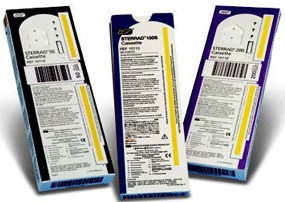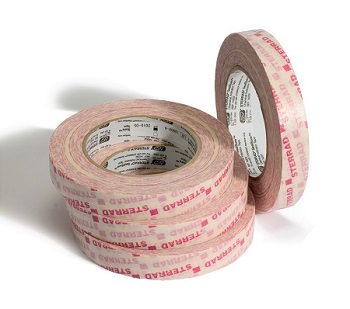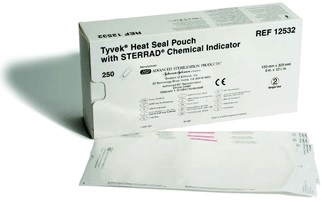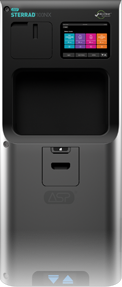 Loading... Please wait...
Loading... Please wait...Free Shipping on orders over $350
Categories
STERRAD Sterility Guide: 10 Reasons Your Medical Center Needs to Use STERRAD for Sterilization
Posted on 11/09/2018 10:18:16

Infection control and preventing cross-contamination are critical in medical facilities everywhere. Bacteria and viruses can thrive in a medical setting unless your team is vigilant in pursuing proper sterilization techniques. Ensuring that your medical instruments are contaminant-free is one of the most important things your practice can do in order to provide the best possible patient outcomes and experiences. One of the most effective choices is the STERRAD line of surgical sterilizers.
10 Reasons to Use STERRAD for Sterilization
A STERRAD machine uses low-temperature gas plasma, combined with hydrogen peroxide vapor, to fully sterilize most medical equipment. Some of its most positive attributes include:
1.Rapid Turnaround Time
2.Cost-Effectiveness
3.No Damage to Instruments
4.Low Concentration of Sterilization Agents
5.No Toxic Residual
6.High Compatibility with Medical Device Materials
7.Efficient Energy Use
8.Strong Manufacturer Support and Education
9.Versatile Range of Options
10.Overall Value
There are many historical disinfection and sterilization methods that help ensure you are effectively purging your surgical instruments and equipment of all microbes: steam under pressure, liquid chemicals, hydrogen peroxide, dry heat, gas plasma, and ethylene oxide gas are just a few options. Each sterilization method has its pros and cons, and the broad range of options means that some health care centers may use varying methods for different instruments and materials.
Since surgical instruments and many other medical items are typically reusable, they must be regularly sterilized to ensure that your team is using clean instruments. There must be no danger of potentially transferring microbes – and resulting infection – to the patient. Sterilizing your team’s medical supplies and instruments is essential, and the STERRAD sterilization process is one of your best options for doing so.
Let’s take a closer look at the reasons your medical center needs to use STERRAD for sterilization.
1. Rapid Turnaround Time
With a STERRAD machine, the sterilization process typically takes around 75 minutes, and some STERRAD models even work within a 45-minute time frame or shorter. This helps you guarantee that your surgical team is ready to go for its next procedure within an hour.
2. Cost-Effectiveness
Not only is the STERRAD system itself surprisingly affordable, but the lack of plumbing, monitoring, and ventilation support expenses also is a cost-saver for your practice. Because of the gentleness of the advanced sterilization process, your surgical instruments will last longer, needing to be repaired and replaced much less often than if you were using other sterilization methods.
3. No Damage to Instruments
Studies have shown that hydrogen-peroxide based, low-temperature sterilization does less damage to medical instruments than traditional autoclaves. This means you’ll have longer surgical instrument life and lower costs for instrument repairs over the useful life of your equipment.
4. Low Concentration of Sterilization Agents
A fully sterilized product is one that contains no microbial life. It’s reasonable to conclude that any gas or substance strong enough to kill all microbes could also present health hazards to your surgical team. However, exhaustive testing has shown that concentrations of hydrogen peroxide in the atmosphere when using a STERRAD sterilizer are well below the OSHA-established limit of 1.0 ppm.
5. No Toxic Residual
The hydrogen peroxide used is very powerful and could be irritating, or even harmful, to your team if exposed – but the plasma eliminates any residual hydrogen peroxide particles. This renders your team’s surgical materials non-toxic for human exposure, which results in the best outcomes for health care professionals, their patients, and the environment. In fact, the only process by-products are non-toxic oxygen and water vapor.
6. High Compatibility with Medical Device Materials
The STERRAD sterilization method is gentle enough for even the most delicate of surgical instruments, which can help ensure longer instrument life and reduced repair costs. STERRAD can handle most materials in your healthcare practice: general surgical instruments, endoscopes, cameras, batteries, power drills, light cables and much more.
7. Efficient Energy Use
The STERRAD line of products can boast being a better choice for the environment, largely due to the fact that it uses less water and energy than some of its competitors. This helps make installation simple as well. There are no costly ventilation, monitoring or plumbing requirements associated with getting a new system up and running.
8. Strong Manufacturer Support and Education
STERRAD machines and consumables are manufactured by Advanced Sterilization Products (ASP), a division of Ethicon (a Johnson & Johnson company). Advanced Sterilization Products has a wide range of support and educational options including the ASP University. The ASP University provides many courses and training overviews and it even has online Continuing Education courses.
The STERRAD system comes with industry-leading support from Advanced Sterilization Products to ensure that the equipment is used correctly and to the full benefit of your surgical team. In fact, the STERRAD Sterility Guide is considered groundbreaking within the industry. The guide is available online and is updated in real time, so you can always find the latest information on instrument validation and system compatibility. In addition, you’ll find that the STERRAD line is designed with simplicity and ease-of-use in mind; this thoughtful design can tremendously limit the potential for human error. Many systems operate with the simple push of one button.
STERRAD Consumables
Advanced Sterilization Products manufactures all the necessary consumable products to effectively use your sterilization system.
STERRAD sterilant cassettes are necessary to operate the STERRAD NX, STERRAD 100NX, STERRAD 100S sterilizers. STERRAD sterilant cassettes use low-temperature hydrogen peroxide gas plasma for terminal sterilization of medical devices. STERRAD sterilant cassettes come in a convenient pre-loaded cassette that delivers a predefined quantity of hydrogen peroxide per cycle to achieve sterilization both conveniently and effectively. Each cassette is a closed system, sealed for the operator's safety, and has a chemical indicator on the packaging in order to detect any leakage of sterilant during transportation.

STERRAD chemical indicator strips and STERRAD chemical indicator tape are sterilization indicator strips and tape that have a color indicator that changes from red to yellow to show exposure to hydrogen peroxide.


Advanced Sterilization Products also produces the Tyvek product line of sterilization rolls and sterilization pouches . Tyvek sterilization pouches and sterilization roll come with the built-in convenience of having a STERRAD chemical indicator to show medical instruments were exposed to hydrogen peroxide.

9. Versatile Range of STERRAD Sterilizers
STERRAD does not take a one-size-fits-all approach to sterilization. Instead, their STERRAD sterilizers are a diverse product line to ensures that your practice and surgical team can choose the optimal system that best meets the needs of the practice and its patients. Some of the newest models even minimize workflow interruptions before they occur through built-in quality assurance features that can help encourage and guarantee industry compliance.
For example, the STERRAD 100S system can improve load tolerance and provide faster sterilization in diffusion-restricted areas. It can also retrofit the original STERRAD 100 for faster cycles.
The STERRAD 100NX is considered the most advanced sterilization technology. It includes features such as network connectivity for remote monitoring, touch-screen displays, a hydrogen peroxide monitor and more.
The STERRAD NX is a compact version that can be used virtually anywhere in a healthcare setting. Its two-tiered chamber and two cycle options can be cart-mounted and easily transferred wherever sterilization is needed.
The STERRAD NX with ALLClear is the compact STERRAD NX sterilizer with ASP’s new ALLClear technology.
The STERRAD 100NX with ALLClear is STERRAD 100NX sterilizer with ASP’s new ALLClear technology.
STERRAD sterilizers with ALLClear Technology feature new technology based on field research and process improvements. ALLClear Technology is designed to reduce workflow interruptions and improve compliance. ALLClear Technology is upgradeable as new innovations are released and ALLClear has networking capability with multiple instrument tracking systems and hospital servers.
STERRAD Systems with ALLClear Technology have the following features:
- Fast, accurate detection and correction of load and system issues, which may otherwise cause cycle interruptions.
- Automatic precycle system diagnostics and load conditioning in 5 minutes or less* (*Timing is based on typical loads. ALLClear Technology can be disabled.).
- ALLClear Technology is designed to optimize package and instrument conditions for sterilization.

10. Overall Value
All characteristics considered, most experts would categorize the STERRAD line as a significant value. In fact, one study has indicated that in large healthcare facilities, over a 10-year period, a 6-percent ROI manifested at a .81 probability, making a STERRAD sterilizer a sound investment for your healthcare practice.
How Does STERRAD Work?
Historically, steam autoclaves, which use wet heat for sterilization, were the most popular and preferred type of sterilization products, but since roughly 1993, STERRAD technology has emerged as a more efficient and effective option. In fact, many practices consider STERRAD the most reliable choice when sterilizing valuable and intricate surgical instruments. With the variety of expensive and delicate instruments at your team’s disposal, they need a fast and easy way to sterilize their tools and reuse them for additional procedures.
With the STERRAD advanced sterilization technology, the chamber draws in a deep vacuum. Then the machine pumps a 59 percent aqueous hydrogen peroxide into the chamber, which surrounds the piece(s) of equipment contained inside. After gaseous hydrogen peroxide diffuses through the load, the pressure dramatically reduces, which allows low-temperature gas plasma to generate. Radio frequency then enters the chamber, which induces the plasma state. High-energy species generate from the hydrogen peroxide in this state. Once they have reacted, they reconstitute to make oxygen, water vapor, and other non-dangerous byproducts.
Essentially, the sterilizer machine works by introducing hydrogen peroxide vapor, which performs the primary sterilization step, and then the sterilizer activates radio frequency to convert the hydrogen peroxide vapor into a plasma, which eliminates residual hydrogen peroxide. The main sterilizing agent is the hydrogen peroxide vapor. This is highly effective, as hydrogen peroxide is a powerful antimicrobial agent, even at low concentrations and temperatures.
The Results
Once the sterilization process is complete, your team can dry and package the
instruments and materials for immediate use or for sterile storage. Doing so
minimizes the risk of re-introducing contaminants, and since instruments remain
sterile until their next use, your team saves time and money by not having to
re-sterilize instruments if their next procedure is delayed or canceled.
Regardless of the method of technology your team uses, a proper sterilization
process mandates several factors. First, instruments have to be basically clean
and disinfected before sterilizing – no residue should be present. They should
then be either opened up or disassembled so that all areas can be sterilized.
In addition, your team should adhere to a high level of basic
disinfection standards. You can always check with your
medical device manufacturer or the sterilizer manufacturer for details on
deciding which cycle to use with various types of materials and instruments.
The Bottom Line
Most experts agree that there is minimal downside to using STERRAD for your sterilization needs. Any disadvantages are typically related to STERRAD’s inability to process powders, liquids or strong absorbers. The system also carries some lumen restrictions. Keep in mind that gas plasma sterilization is not the preferred method for sterilizing liquids or devices that can be physically damaged or fundamentally modified by low-pressure exposure. The STERRAD Sterility Guide remains your best resource for how best to use the system to its full potential to support you and your surgical team.
The Gold Standard for Sterilization
Just like CIDEX OPA, STERRAD sterilizers have become the gold stand for low-temperature sterilization. The sterilization process ensures that medical devices, instruments, and supplies are processed according to the manufacturer’s specifications and that your team fully complies with national and international sterilization standards. Along with your practice’s basic infection control supplies, your sterilization choice is imperative for your team’s success.
The STERRAD family of sterilizers are based on years of research and development. They are proven to be a reliable, cost-effective and efficient method that provides the highest level of safety for your surgical team, your patients and the environment. Through extensive study, the system has shown itself a sound investment for many different types of healthcare facilities.
If you’re still researching your options and would like some help, the team at USA Medical and Surgical Supplies has decades of experience researching and recommending medical supplies and equipment. Please contact us if you have any questions about the right equipment or supplies for your healthcare facility. Email us today on our Contact form or call toll-free: 1-866-561-2380.




